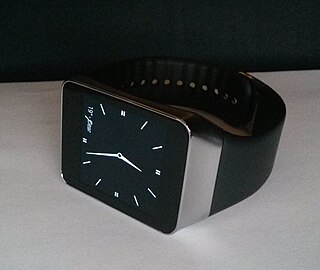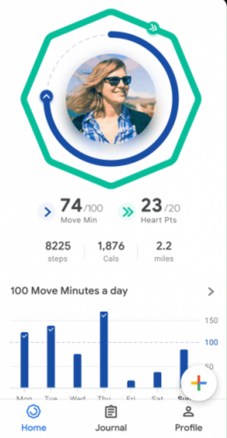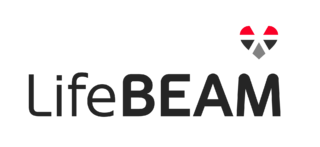Related Research Articles

A smartphone is a mobile device that combines the functionality of a traditional mobile phone with advanced computing capabilities. It typically has a touchscreen interface, allowing users to access a wide range of applications and services, such as web browsing, email, and social media, as well as multimedia playback and streaming. Smartphones also have built-in cameras, GPS navigation, and support for various communication methods, including voice calls, text messaging, and internet-based messaging apps.
Fullpower is a Santa Cruz, California-based privately held developer of cloud-based IoT and wearable product technology used for activity tracking and sleep monitoring. Fullpower specializes in wireless technology, microelectromechanical systems, and nanotechnology. The company holds over 125 patents for its intellectual property, which it licenses to manufacturers.
A mobile operating system is an operating system for smartphones, tablets, smartwatches, smartglasses, or other non-laptop personal mobile computing devices. While computers such as typical/mobile laptops are "mobile", the operating systems used on them are generally not considered mobile ones, as they were originally designed for desktop computers that historically did not have or need specific mobile features. This line distinguishing mobile and other forms has become blurred in recent years, due to the fact that newer devices have become smaller and more mobile unlike hardware of the past. Key notabilities blurring this line are the introduction of tablet computers and light-weight laptops and the hybridization of the two in 2-in-1 PCs.
Withings is a French consumer electronics company headquartered in Issy-les-Moulineaux, France. It also has offices in Boston, Massachusetts, USA, and Hong Kong, and distributes its products worldwide. Withings is known for design and innovation in connected devices, such as the first Wi-Fi scale on the market, an FDA-cleared blood pressure monitor, a smart sleep system, and a line of automatic activity tracking watches. It also provides B2B services for healthcare providers and researchers.

A smartwatch is a wearable computer in the form of a watch; modern smartwatches provide a local touchscreen interface for daily use, while an associated smartphone app provides management and telemetry, such as long-term biomonitoring. While early models could perform basic tasks such as calculations, digital time telling, translations, and game-playing, smartwatches released since 2015 have more general functionality closer to smartphones, including mobile apps, a mobile operating system, and WiFi/Bluetooth connectivity. Some smartwatches function as portable media players, with FM radio and playback of digital audio and video files via a Bluetooth headset. Some models, called watch phones, have mobile cellular functionality such as making telephone calls.

The ARM Cortex-A15 MPCore is a 32-bit processor core licensed by ARM Holdings implementing the ARMv7-A architecture. It is a multicore processor with out-of-order superscalar pipeline running at up to 2.5 GHz.

Tizen is a Linux-based mobile operating system backed by the Linux Foundation, developed and used primarily by Samsung Electronics.

Exynos, formerly Hummingbird (Korean: 엑시노스), is a series of ARM-based system-on-chips developed by Samsung Electronics' System LSI division and manufactured by Samsung Foundry. It is a continuation of Samsung's earlier S3C, S5L and S5P line of SoCs.

The Samsung Galaxy S5 is an Android-based smartphone unveiled, produced, released and marketed by Samsung Electronics as part of the Samsung Galaxy S series. Unveiled on 24 February 2014 at Mobile World Congress in Barcelona, Spain, it was released on 11 April 2014 in 150 countries as the immediate successor to the Galaxy S4. As with the S4, the S5 is an evolution of the prior year's model, placing a particular emphasis on an improved build with a textured rear cover, IP67 certification for dust and water resistance, a more refined user experience, new security features such as a fingerprint reader and private mode, expanded health-related features including a built-in heart rate monitor, a USB 3.0 port, and an updated camera featuring speedy auto-focus through phase-detection. The video resolution has been upgraded to 2160p (4K) and the frame rate at 1080p has been doubled to 60 for a smooth appearance.

Wear OS is a version of Google's Android operating system designed for smartwatches and other wearables. By pairing with mobile phones running Android version 6.0 "Marshmallow" or newer, or iOS version 10.0 or newer with limited support from Google's pairing application, Wear OS integrates Google Assistant technology and mobile notifications into a smartwatch form factor. Wear OS is closed-source, in contrast to the free and open-source Android.

The Moto 360 is an Android Wear-based smartwatch announced by Motorola Mobility in 2014. It was announced on March 18, 2014 and was released on September 5, 2014 in the US along with new models of the Moto X and the Moto G.

The Samsung Gear Live is an Android Wear-based smartwatch announced and released by Samsung and Google on June 25, 2014. It was released along with the LG G Watch as launch devices for Android Wear, a modified version of Android designed specifically for smartwatches and other wearables. Gear Live is the 5th device launched in the Samsung Gear family of wearables. It is compatible with all smartphones running Android 4.3 or higher that support Bluetooth Smart.

Google Fit is a health-tracking platform developed by Google for the Android operating system, Wear OS, and iOS. It is a single set of APIs that blends data from multiple apps and devices. Google Fit uses sensors in a user's activity tracker or mobile device to record physical fitness activities, which are measured against the user's fitness goals to provide a comprehensive view of their fitness.

Samsung Gear S is a smartwatch designed and marketed by Samsung Electronics. It was announced on August 28, 2014, as the successor to the Samsung Gear 2 and was released on November 7, 2014. The smartwatch can be modified to run Android 5.1.1 or Wear OS 6.0.1.
Sequans Communications is a fabless semiconductor company that designs, develops, and markets integrated circuits ("chips") and modules for 4G and 5G cellular IoT devices. The company is based in Paris, France with offices in the United States, United Kingdom, Israel, Hong Kong, Singapore, Taiwan, South Korea, Finland and China. The company was founded as a société anonyme in October 2003 by Georges Karam. It originally focused on the WiMAX market and expanded to the LTE market in 2009, dropping WiMAX altogether in 2011. Today the company develops and delivers only LTE chips and modules for the global 5G/4G cellular IoT market. Sequans was listed on the New York Stock Exchange in April 2011. Karam is the company's CEO.

Hearables or smart headphones or earbuds are electronic in-ear devices designed for multiple purposes. The category is split between hearables for hearing health, and hearables for other applications.

Google's Advanced Technology and Projects group (ATAP) is a skunkworks team and in-house technology incubator, created by former DARPA director Regina Dugan. ATAP is similar to X, but works on projects, granting project leaders time—previously only two years—in which to move a project from concept to proven product. According to Dugan, the ideal ATAP project combines technology and science, requires a certain amount of novel research, and creates a marketable product. Historically, the ATAP team was born at Motorola Mobility and kept when Google sold Motorola Mobility to Lenovo in 2014; for this reason, ATAP ideas have tended to involve mobile hardware technology.

LifeBEAM, founded in 2011, is an artificial-intelligence wearables technology company. The technology was originally developed for monitoring pilots, astronauts and special forces through sensors in their helmets. It was then expanded to consumer fitness products, including artificially intelligent wearables, such as Vi.
Samsung Strategy and Innovation Center (SSIC) is a division of Samsung Electronics. It works with entrepreneurs and corporate partners to invest in disruptive technologies, such as artificial intelligence, digital health, mobility, the Internet of Things, and other consumer-facing applications of data-driven technology.

The Samsung Galaxy A42 5G is a mid-range Android smartphone developed by Samsung Electronics as part of its A series line. The phone was announced on 2 September 2020 during Samsung's virtual "Life Unstoppable" event, and first released on 11 November 2020 as a successor to the Galaxy A41. The phone comes pre-installed with Android 10 and Samsung's custom One UI 2.5 software overlay that can be updated to Android 13 with One UI 5.0. It was rebranded as the 'Samsung Galaxy M42 5G' in India and launched in the M series lineup on 1 May 2021.
References
- ↑ Tibken, Shara. "Simband, sensors key to Samsung wearables push". CNET . CBS Interactive . Retrieved 28 May 2014.
- ↑ Kelion, Leo (28 May 2014). "Samsung reveals Simband and Sami health platform". BBC . Retrieved 28 May 2014.
- ↑ "Fit for a Wrist: Samsung Outlines Vision for Wearable Devices". NBC News . 28 May 2014. Retrieved 28 May 2014.
- ↑ "Samsung adds partners to its mHealth platform" . Retrieved 15 March 2016.